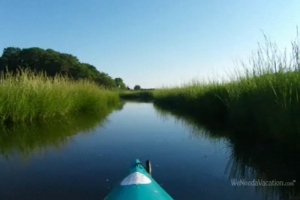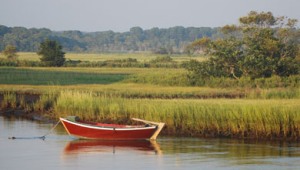
Kayaking through the salt marshes of Cape Cod
The next time you stay on the Cape or Islands at one of our
Cape Cod rentals, don't pass up the opportunity to explore the exotic inhabitants
of the nearby saltwater marshes.
Although saltwater marshes are certainly not unique to the Cape and Islands, they
greatly contribute to what makes the scenery and wildlife here so beautiful and
special. The deep and varied hues of green, often complemented by the blues of sky
and water, are changeable and alluring. The growing popularity of kayaking has increased
our exposure to the marshes, providing us with a most relaxing, affordable and fascinating
activity, and further promoting our appreciation for this unique setting.
![]()
The ecosystem of the salt marshes provides a critical habitat to countless species
of the wildlife. But the bogs and marshes are inherently fragile, easily affected
by the vicissitudes of both man and weather.
In addition to providing a critical feeding, breeding and nesting habitat to a plethora
of wildlife including rare, endangered species, the marshes of the coastal wetlands
supply nurseries with fish and shellfish, store floodwaters, and protect our shores
during storms. We also benefit from the natural purification system they provide
by filtering pollutants and sediments that would otherwise run into the surrounding
seas and drinking water supplies.

Along the Herring River, Harwich
Since 2003, the Association to Preserve
Cape Cod (the APCC) has used its salt marsh monitoring program to learn
more about this precious resource and what we can do to protect it. According to
the APCC, 38% of our historical salt marshes on the Cape have either been lost or
severely harmed since colonial times. The worst culprits are agriculture, mosquito
treatment, channeling and housing development. Critical to the survival of the marshes
are the salinity levels, which rise and fall naturally with the tides. The increase
of nitrogen from onsite septic systems and lawn fertilizing promotes the rapid growth
of algae and phytoplankton, which in turn threatens the indigenous eel grass. And
invasive bridges and railroads restrict the natural flow of the nutrients to the
marshes. This then results in the replacement of native salt marsh vegetation by
the colonization of dense stands of common reed.